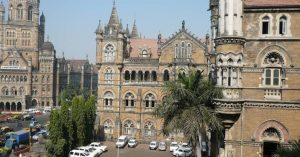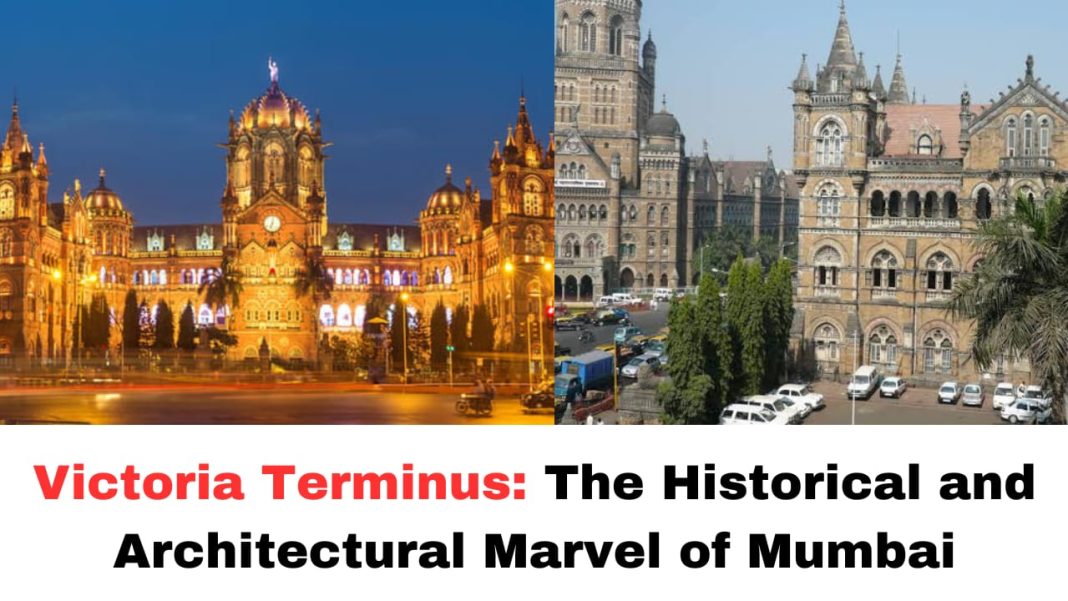Digital News Guru Mumbai Desk:
Victoria Terminus: The Iconic Fusion of Colonial Legacy and Indian Culture
Victoria Terminus, now known as Chhatrapati Shivaji Maharaj Terminus (CSMT), is one of Mumbai’s most iconic landmarks, steeped in history and architectural grandeur. This majestic railway station, designed in the Victorian Gothic Revival style, is not only a testament to British colonial engineering but also a vibrant hub of modern-day India. As a UNESCO World Heritage Site, CSMT stands as a symbol of the nation’s progress and its rich colonial past.
Historical Significance
Victoria Terminus was built in the late 19th century to accommodate the growing needs of the rail transport system in India, which was a critical component of the British Empire’s communication and trade network. The station was commissioned by the British government, and its construction began in 1878. The need for a station of this scale arose from the increasing traffic along the Mumbai and Pune railway line, which required more space for both passengers and goods.

The station was inaugurated in 1887 to coincide with the Golden Jubilee of Queen Victoria’s reign. The name “Victoria Terminus” was chosen to honor the British monarch, reflecting the influence of the British Empire in India during that period. However, after India gained independence in 1947, the station was renamed Chhatrapati Shivaji Maharaj Terminus in honor of the Maratha warrior king, Chhatrapati Shivaji Maharaj, who is considered a national hero for his resistance against the Mughal Empire and his contribution to Indian culture and history.
Architectural Masterpiece
The architectural design of Victoria Terminus was the brainchild of Frederick William Stevens, a British architect. The station blends elements of Victorian Gothic, Venetian Gothic, and traditional Indian architectural styles, creating a unique fusion that symbolizes both the colonial influence and the Indian identity. The structure is a marvel of design and engineering, featuring intricate stone carvings, arched windows, and towering spires that dominate the skyline.
One of the most striking features of the station is its central dome, which is surrounded by smaller domes and towers. The building’s exterior is adorned with detailed sculptures of animals, mythical creatures, and figures that depict the grandeur of the British Empire. These ornamental elements, along with the grand arches and stained-glass windows, contribute to the station’s imposing yet elegant look.
Inside the station, the design is equally impressive. The grand concourse is a vast space with high vaulted ceilings, while the platforms are supported by steel girders that are a feat of 19th-century engineering. The original interior design also featured elaborate Victorian woodwork and an ornate clock that has become one of the station’s defining features.
Significance in Modern India
Chhatrapati Shivaji Maharaj Terminus (CSMT) is more than just a historical building; it is an active and bustling railway hub. Serving as one of the busiest stations in India, it handles thousands of passengers daily, connecting Mumbai to various destinations across the country. The station is the headquarters of the Central Railway Zone, and it is a critical node in Mumbai’s sprawling suburban railway network.

CSMT’s importance extends beyond its function as a transportation hub. The station has been featured in several Bollywood films, cementing its place in popular culture. Its role in cinema and its prominence in Mumbai’s landscape have made it a symbol of the city’s energy, dynamism, and multiculturalism.
In recent years, the station has undergone various modernization efforts to cope with the demands of the growing city. Despite these upgrades, the authorities have been careful to preserve the building’s original design and features, ensuring that the station retains its historical integrity while meeting the needs of contemporary rail travel.
A UNESCO World Heritage Site
In 2004, Chhatrapati Shivaji Maharaj Terminus was designated as a UNESCO World Heritage Site, recognizing its outstanding universal value as an example of the unique blend of Gothic and Indian architectural styles. The station’s historical, cultural, and architectural significance has been preserved in this designation, which brings attention to the need for conservation efforts.
Being listed as a World Heritage Site has brought international attention to the station and has led to greater efforts to preserve and protect the building. The Indian government, along with local authorities in Mumbai, has invested in maintaining the structure, as well as enhancing its facilities for the growing number of commuters. The station remains a point of pride for the city, and its heritage status ensures that future generations can appreciate its beauty and historical importance.
Architectural Features of CSMT
The architectural design of CSMT is a blend of different styles, with Victorian Gothic Revival being the dominant theme. The use of stone and iron was innovative at the time, and it continues to stand out as an engineering marvel. The main façade of the building is a grand display of stone masonry, with intricate carvings of flora and fauna. The large arched windows and the spires contribute to the building’s majestic appearance, making it one of the most beautiful railway stations in the world.
The central dome of the station is surrounded by smaller towers, which add to its grandeur. These elements give the building a European cathedral-like quality, while the incorporation of Indian features, such as the decorative motifs and sculptures of animals, connects it to the country’s culture. The ornate ironwork and the steel beams used to support the structure were cutting-edge at the time, and they remain an important part of the building’s historical value.

Inside the station, the massive concourse is flanked by grand staircases, and the platforms are connected by a network of iron and steel beams. The station was designed to accommodate both the needs of passengers and the movement of goods, which was an essential part of the railway network at the time. The clock on the station’s tower remains an iconic feature, with its Victorian design adding to the station’s charm.
Conclusion
Victoria Terminus, or Chhatrapati Shivaji Maharaj Terminus, is much more than just a railway station. It is an architectural marvel, a historical landmark, and an integral part of Mumbai’s urban landscape. Its unique design, historical significance, and cultural importance make it one of the most notable buildings in India. As a UNESCO World Heritage Site, CSMT continues to stand as a testament to the fusion of colonial and Indian architectural styles, representing the rich and diverse history of Mumbai and India as a whole. The station’s role in the everyday life of millions of commuters further cements its place as one of the city’s most enduring symbols.
You May Also Read: Rahul Gandhi vs. BJP: What Really Happened in Parliament?








